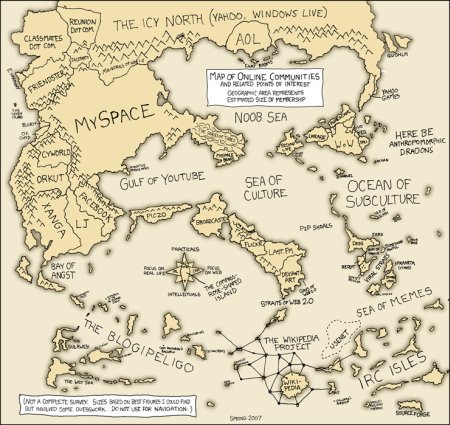US companies leaving Second Life, German companies still happy
The Second Life Boom couldn’t have lasted forever. Everyone knew that. At least now you won’t find anyone who didn’t know it all along. Seems like everyone was right. Now there are the first signs of companies leaving Second Life. Some are trying new worlds, some just leave it at that.
The LA Times has a story about the US companies starting to have second thoughts:
„There’s not a compelling reason to stay,“ said Brian McGuinness, vice president of Aloft, a brand of Starwood Hotels & Resorts Worldwide Inc. that is closing its Second Life shop and donating its virtual land to the nonprofit social-networking group TakingITGlobal.
But the sites of many of the companies remaining in Second Life are empty. During a recent in-world visit, Best Buy Co.’s Geek Squad Island was devoid of visitors and the virtual staff that was supposed to be online.
The schedule of events on Sun Microsystems Inc.’s site was blank, and the green landscape of Dell Island was deserted. Signs posted on the window of the empty American Apparel store said it had closed up shop.
On the other hand, many companies had trouble finding something of added value to present in the virtual world:
For some advertisers, the problem is that Second Life is a fantasyland, and the representations of the people who play in it don’t have human needs. Food and drink aren’t necessary, teleporting is the easiest way to get around and clothing is optional. In fact, the human form itself is optional.
Which is especially frustrating, if you’re just in it because you wanted that publicity:
most firms were more interested in the publicity they received from their ties with Second Life than in the digital world itself. „It was a way to brand themselves as being leading-edge,“ he said.
I know exactly what they mean. I had quite a few clients asking us about Second Life. What it is, and what they could do in there. Some even asked, whether it actually makes sense to move in there. For some companies there is a lot they can provide in this digital world that is of added value. Some might not have the right product, but had a good idea. And some might better not move in-world in the first place.
Now some US companies that did move in with whatever approach, are reversing their strategy.
But, as this article of German Newspaper „Die Welt“ says, two of the most active German companies in Second Life are still content to stay:
„Momentan bestehen keine Pläne, sich aus Second Life zurückzuziehen“, so Oliver Brüggen, Sprecher von Adidas […] Seit der Inseleröffnung im September 2006 verkaufte Adidas monatlich 2700 Schuhpaare im Second-Life-Shop und verzeichnete im Schnitt 9000 Besucher.
(„There are currently no plans to move out of Second Life, says Oliver Brüggen of Adidas. Since opening their shop in 2006, Adidas has sold 2700 pairs of shoes per month and had around 9.000 visitors per month“)
Auch DaimlerChrysler will weiterhin mit seiner Marke Mercedes Benz in Second Life vertreten bleiben. „Wir sind sehr zufrieden mit den Besucherzahlen. Das Ziel unseres Auftritts in Second Life ist, in direkten Dialog mit der Zielgruppe zu treten“, betont Susanne Klauser
DaimlerChrysler will also stay within Second Life with their brand Mercedes Benz. „We are very satisfied with the number of visitors. The objective of our presence is to engage in a dialogue with our target audience“, emphasizes Susanne Klauser
(Translation is mine, please let me know if something is incorrect.)
I wonder just for how long they’ll stay. Because in general, the first indicators of a slowdown in user growth and activity rate are appearing:
Between May and June, the population of active avatars declined 2.5%, and the volume of U.S. money exchanged within the world fell from a high of $7.3 million in March to $6.8 million in June.
What’s should be even more concerning: users seem to be flocking on to other platforms, testing them. Since Second Life is not really the best in terms of graphics and performance, there might soon be a better offer around the corner. And users might act in a swarm like behaviour and move on to the next tree. Worlds such as Entropia Universe and There.
I just wonder, with all that hype around facebook, if it isn’t time for a facebook application that offers you the social components of facebook (especially enabling to keep you current contact list) in a 3D virtual world? Wouldn’t that be neat? And for my sake, please also include netvibes in that offer!


 Wo ich sonst so bin...
Wo ich sonst so bin...